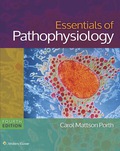
A.
To Determine: The reason for immunologic mechanisms that are associated with an individual having allergic rhinitis or hay fever.
Introduction: Disordersare the symptoms caused by the immune response and lead to the hypersensitivity reaction to expose specific antigens.
A.
Explanation of Solution
An individual having the symptoms of allergic rhinitis and hay fever means an individual has type I hypersensitivity disorders. The type I hypersensitivity involves the IgE antibody. Two types of cells are involved in a type I hypersensitivity reaction, such as type 2 helper T cell (TH2) and mast cells/basophils. The TH2 cell becomes differentiated and givesa response to allergens and helminths. The reaction begins with the mast cell sensitization. At this stage, the allergen-specific IgE antibodies attach to the receptors of mast cell and basophil surface. The sensitizing allergen binds to the cell-associated IgE and proceeds with a series of events.
B.
To Determine: Thetype of diagnostic test used to treat allergic rhinitis.
Introduction: The hypersensitivityreaction activates depending upon the type of immune response, causing injury and the site of the antigen.
B.
Explanation of Solution
An individual suffering from allergic rhinitis is advised to go through the diagnostic tests. The examine the allergic rhinitis; the doctors check a careful history and physical examination of an individual. Skin testing is also used to examine the type of allergens. Microscopic identification also advisesproceeding to check the number of eosinophils in the nasal part.
C.
To Determine: The type of cure is used to relieve allergic rhinitis and hay fever.
Introduction: Allergic rhinitis is a type of disorder in which an individual has symptoms of sneezing, itching, and watery discharge from the nose and eyes.
C.
Explanation of Solution
There are different types of treatments that are used to cure individuals suffering from allergic rhinitis. The oral antihistamines and topical decongestants are advised to use. Intranasal corticosteroids are very useful in treating allergic rhinitis. A drug called intranasal cromolyn is used to stabilize mast cells to prevent its degranulation.
Want to see more full solutions like this?
Chapter 16 Solutions
EBK ESSENTIALS OF PATHOPHYSIOLOGY
 Human Anatomy & Physiology (11th Edition)BiologyISBN:9780134580999Author:Elaine N. Marieb, Katja N. HoehnPublisher:PEARSON
Human Anatomy & Physiology (11th Edition)BiologyISBN:9780134580999Author:Elaine N. Marieb, Katja N. HoehnPublisher:PEARSON Biology 2eBiologyISBN:9781947172517Author:Matthew Douglas, Jung Choi, Mary Ann ClarkPublisher:OpenStax
Biology 2eBiologyISBN:9781947172517Author:Matthew Douglas, Jung Choi, Mary Ann ClarkPublisher:OpenStax Anatomy & PhysiologyBiologyISBN:9781259398629Author:McKinley, Michael P., O'loughlin, Valerie Dean, Bidle, Theresa StouterPublisher:Mcgraw Hill Education,
Anatomy & PhysiologyBiologyISBN:9781259398629Author:McKinley, Michael P., O'loughlin, Valerie Dean, Bidle, Theresa StouterPublisher:Mcgraw Hill Education, Molecular Biology of the Cell (Sixth Edition)BiologyISBN:9780815344322Author:Bruce Alberts, Alexander D. Johnson, Julian Lewis, David Morgan, Martin Raff, Keith Roberts, Peter WalterPublisher:W. W. Norton & Company
Molecular Biology of the Cell (Sixth Edition)BiologyISBN:9780815344322Author:Bruce Alberts, Alexander D. Johnson, Julian Lewis, David Morgan, Martin Raff, Keith Roberts, Peter WalterPublisher:W. W. Norton & Company Laboratory Manual For Human Anatomy & PhysiologyBiologyISBN:9781260159363Author:Martin, Terry R., Prentice-craver, CynthiaPublisher:McGraw-Hill Publishing Co.
Laboratory Manual For Human Anatomy & PhysiologyBiologyISBN:9781260159363Author:Martin, Terry R., Prentice-craver, CynthiaPublisher:McGraw-Hill Publishing Co. Inquiry Into Life (16th Edition)BiologyISBN:9781260231700Author:Sylvia S. Mader, Michael WindelspechtPublisher:McGraw Hill Education
Inquiry Into Life (16th Edition)BiologyISBN:9781260231700Author:Sylvia S. Mader, Michael WindelspechtPublisher:McGraw Hill Education





